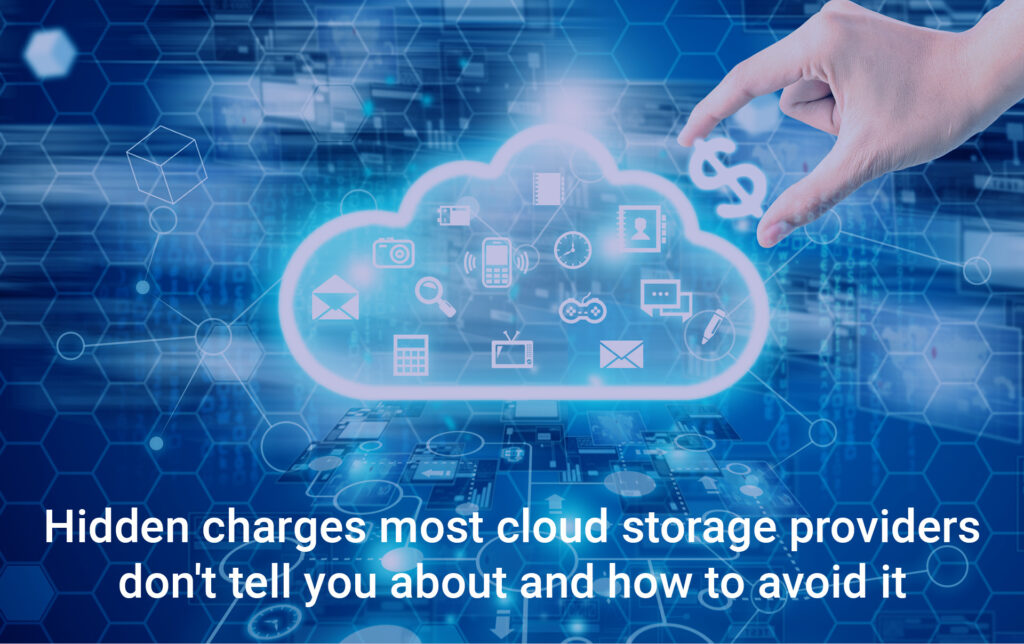Is there anything more seductive than cloud storage prices? Prices are given as fractions of dollars which makes quantifying the actual costs in real value near impossible. And they do this for good reason. Amazon, for example, charges $0.00000625125 for 128 megabytes of memory to support a Lambda Function while Azure charges a minute $0.01 per gigabyte to store data for a month and $0.00099 per gigabyte to archive data.
Of course, if you’re a big spender you can always opt for Google’s high CPU version for $0.049 … You’ve read that right, less than 2 cents! These numbers throw us off guard and make us forget common sense: If something seems too good to be true, it usually is! And, when the end of the month arrives, the bill is much larger than anticipated and we fail to understand how these smidgens added up so quickly?
However, with over 90% of businesses either already using or considering using cloud-based data storage it’s not without good reason. Don’t let hidden fees deter you. Cloud storage offers myriad benefits that organizations of all sizes can enjoy including the ability to scale rapidly. The trick is not to fall into the trap of elusive hidden costs. Let’s look at some pitfalls and how cloud storage providers use egress charges to turn fractions of cents into real money and how to avoid it:
Let’s look at some pitfalls and how cloud storage providers use egress charges to turn fractions of cents into real money and how to avoid it:
1. The egress roach motel
The widely known slogan, “roaches check in, but they don’t check out” seems accurate when you look at the costs for data egress. Most cloud service providers (CSPs) don’t charge their customers to back up their data to the cloud (aka ingress). But you’re in for a mighty surprise once you try to restore that data or copy the data from the cloud to on-prem since the egress charges are often infinitely larger. CSPs also charge when they move customers’ data to a new geographical location to accelerate speeds for their local users. Egress charges can easily run from $2 to $9 per terabyte. Egress charges have long been one of the biggest inhibitors to companies wanting to move their data into (and out of) the cloud, and that’s because these charges make it virtually impossible to predict how much money will actually be spent to effectively manage data.
2. What are egress charges?
Egress charges typically include inventory charges and retrieval charges. For example, accessing your organization’s data can trigger a retrieval charge for simply requesting the data. Then there is an inventory charge to contend with when requesting a list of stored objects. Cloud storage providers often charge a minimum amount for an object based on, say, 128 KBs, even though the object may only be 50 KBs in size.
3. How you can save thousands in cloud storage costs
Cloud storage can be tricky given that its best feature – the ability to scale up to handle any demand, is also a budgetary minefield. To get your cloud storage costs under control and manage egress charges, organizations should consider trade-offs such as limiting historical data and the quality of video data, especially the low-priority videos. File archiving is a further option to move redundant and irrelevant data from on-premises to the cloud. Ultimately, it’s about reducing what comes back out of the cloud. Or you can move to a provider which doesn’t charge a cent for egress which can save you thousands of dollars.
Stage2Data’s Cohesity-as-a-Service solution is entirely transparent with no hidden costs and no data egress charges. File Archiving-as-a-Service can furthermore reduce the size of backups which, in turn, has a massive cost-savings effect. Offloading your archive files and data to the Stage2Data cloud saves local storage capacity and lightens the load on infrastructure. This solution also beats Azure and AWS’ pricing as there are no ingress or egress charges.
A Practical Guide to
Cloud Backup
If you found this post interesting, you might enjoy these too:
Need Office 365 backup? Here are 3 reasons why you should consider Cohesity
Streamline data backup and recovery with Cohesity’s comprehensive SaaS solution
Case Study: Onboarding Cohesity Improves Stage2Data’s Top and Bottom Lines


